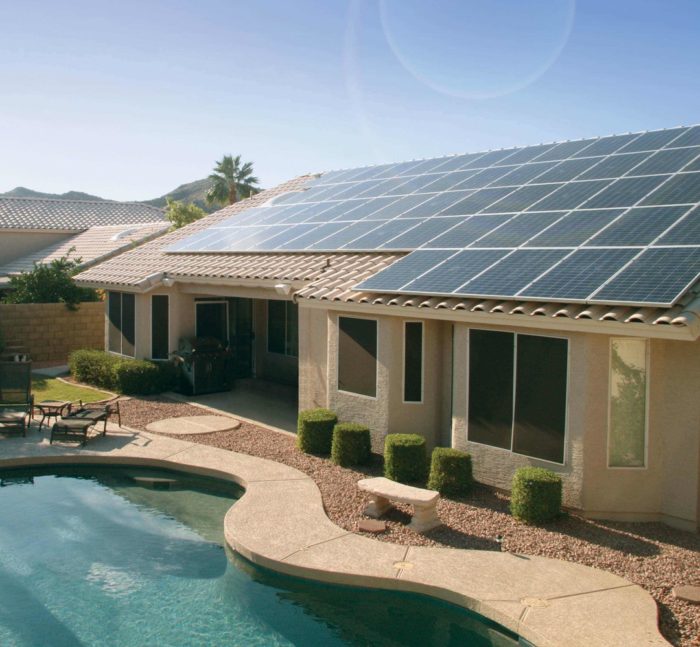
The global photovoltaic (PV) panel industry is facing the first shortage of panels in eight years as installations continue to pick up, according to a report in BusinessWeek.
The article said the industry could install as much as 52 gigawatts of solar panels this year and another 61 gigawatts next year. That would be more than seven times the capacity of the PV equipment installed just five years ago, and substantially above the 40 gigawatts installed last year.
The question is whether the industry has enough manufacturing capacity to produce the required PV modules.
Among panel makers who expect demand to outstrip supply is Tom Werner, CEO of SunPower Corp., who said his company’s PV module factories are running at full tilt. The company is planning a new factory that would begin production in 2017 and would turn out PV modules with a total capacity of 700 megawatts a year.
Canadian Solar CEO Shawn Qu also is expanding in anticipation of shortages ahead. The company began building a new factory in China in May with an initial capacity of 300 megawatts a year.
And SolarCity Corporation is buying Silevo, a manufacturer of high-efficiency PV modules. The company wants to build a factory near Buffalo, New York, capable of building 1 gigawatt worth of panels per year, triple the size of the largest existing PV module plant in the U.S. now, according to an article in the The Wall Street Journal.
Chinese production drove down prices
Between 2005 and 2010, BusinessWeek said, Chinese panel manufacturers raised billions of dollars on Wall Street to finance new factories. They took control of the market from companies in the U.S., Japan, and Germany, and the flood of panels on the market drove down prices. That helped spur demand, but the glut also forced dozens of manufacturers out of business.
In June, the U.S. Commerce Department imposed import duties on certain Chinese solar panels. The duties range from 18 percent to 35 percent, and were imposed to counter what regulators said were unfair subsidies. The ruling is preliminary, but the U.S. began collecting the tariffs just the same, The New York Times said.
The tariffs may put additional pressure on suppliers. NPD Solarbuzz, a market research company, said more than 3 gigawatts of projects in the PV pipeline in the U.S. had been ready to use Chinese-made panels. But because of the tariffs, those companies may have to find other manufacturers or pay more, Solarbuzz said.
Module prices have fallen to 76 cents a watt, BusinessWeek said, compared to $2.01 at the end of 2010. That does not include “soft costs” such as installation and permitting; the average installed cost for a residential system is $4.56 per watt, according to the most recent Solar Market Insight Report from the Solar Energy Industries Association.
Weekly Newsletter
Get building science and energy efficiency advice, plus special offers, in your inbox.














4 Comments
Detailed costs
It be interesting to know differences in prices around the country. In North TX and the SW, we can get Chinese systems for $3.50/w, Taiwanese for $4.00/w and US for $4.75. We can net-zero around 2w/sf. In the SW, we can net-zero around 1.5w/sf with a high-performing house.
I wonder if anyone has cost breakdown for a PV system, say a 9.5 kW system, in your area.
grid tied PV costs
In MA as of Q2 2014 based on quotes I've seen, a 9.5 kw grid tied rooftop system would come in at about $3.75/watt with first-tier Chinese commodity panels, about $4.25/watt using 20% efficiency US panels.
There are installers out there still quoting in the low 5s, but I don't know anybody who actually signed those contracts- only seen the quotes.
PV Costs
We can get mid-range efficiency tier 1 US modules for the same price as the same efficiency tier 1 Chinese right now (i expect both to increase as the tariffs kick in).
But we offer 3kW @ 4.83/watt, 6kW @ 4.17/watt, 9kW @ 3.67/watt, and 12kW @ 3.33/watt (US Made PV Panels, Inverters, and Racking system). These prices are in an area where we don't get to do expedited permitting and are required to have a PE certify the roof of every installation (not always needed on a code built residential roof with a single layer of shingles installed, but no AHJ here will even consider waiving the PE stamp...)
Are all these costs
BEFORE govt subsidies?
I think some contractors in my area are fond of quoting prices NET of 30% federal tax credit.
Log in or create an account to post a comment.
Sign up Log in